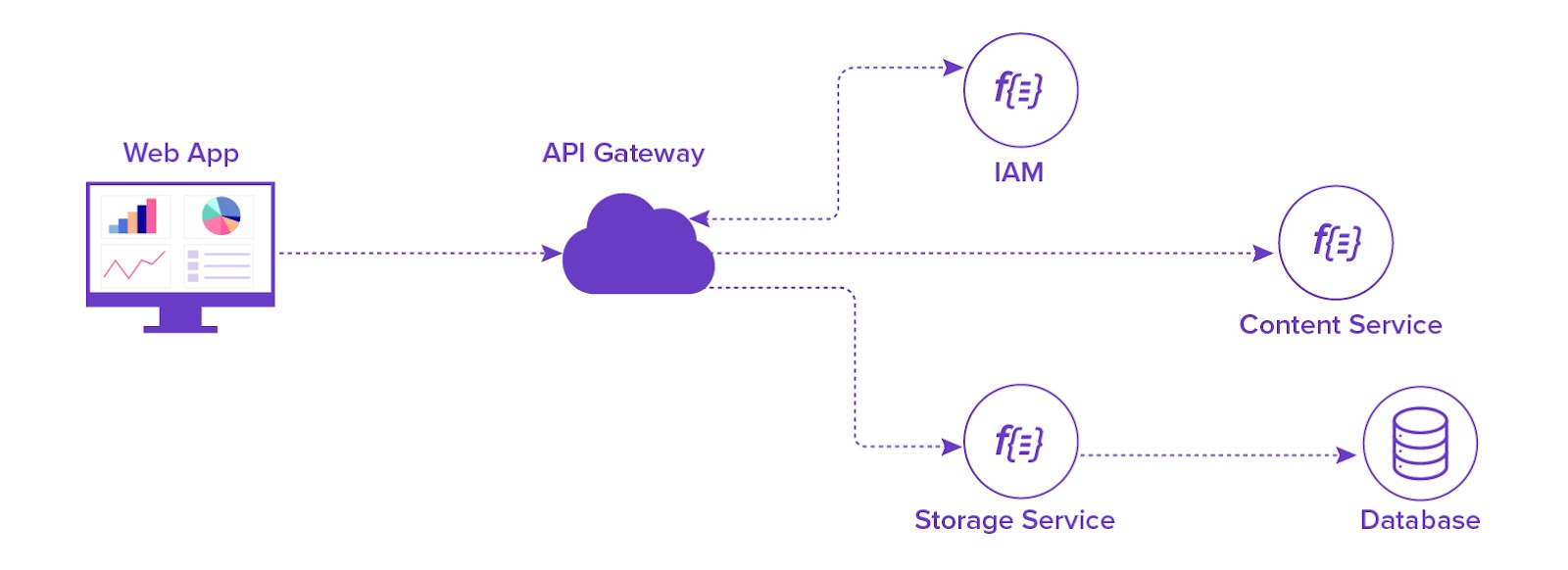When competing in a fast-paced and cutthroat market, businesses need to take advantage of any technology they can get their hands on. Through the creative combination of the greatest features of public and private cloud systems, the hybrid cloud allows companies to reap the benefits of both and achieve business agility. Public cloud services combined with on-premises infrastructure allow companies to create scalable, flexible IT environments that may meet a range of business needs.
According to Flexera's State of the Cloud report, four out of five companies intend to increase their cloud spending, despite economic uncertainty. This growth certainly is being seen for a reason; hybrid cloud infrastructures provide companies with the scalability and flexibility required to navigate uncertain economic circumstances.
Companies must scale their operations successfully, manage expenses, and quickly adjust to changing market conditions. By offering an adaptable IT architecture that accommodates a range of workloads and business objectives, the hybrid cloud model meets these goals. Companies that must have control over sensitive data while utilizing the scalability and economy of public cloud services would find this strategy very helpful.
This article will explore hybrid cloud approaches and their advantages for businesses. We'll look at the fundamental ideas, benefits, practical issues, and hybrid cloud solution applications.
Understanding Hybrid Clouds

Shared data and applications between public and private cloud environments are made possible by the hybrid cloud. With this configuration, scalability and economy of cost are combined with the security and management of a private cloud.
Hybrid cloud solutions provide a unified and coherent IT architecture by facilitating smooth communication and interoperability between several environments.
Key Characteristics and Components of a Hybrid Cloud Setup
A hybrid cloud configuration has several essential parts that interact to provide its many advantages:
- Unified Management: Centralized management of both public and private cloud resources ensures uniform administration and monitoring
- Interoperability: Easy connection and integration between several contexts facilitates the easy movement of applications and data
- Scalability: The capacity to adjust resources upward or downward according to demand ensures the best results and economy of costs
- Cost Efficiency: The best utilization of resources lowers expenses while using affordable public cloud services for non-sensitive applications
Benefits of Hybrid Cloud
The following main advantages of a hybrid cloud configuration improve company operations and promote expansion:
- Flexibility and Scalability: Hybrid cloud solutions let companies change resources as needed. This flexibility helps manage different workloads and adjust to shifting market needs
- Cost Optimization and Resource Management: Companies that balance their on-premises and cloud spending can accomplish resource management and cost efficiency. By letting businesses make use of the pay-as-you-go model offered by public clouds, this approach reduces infrastructure capital costs
Building a Hybrid Cloud Strategy

Creating a hybrid cloud strategy requires careful planning and evaluation of several elements to ensure compatibility with the company's goals. Through an understanding of specific company needs and the right hybrid cloud model, companies can create a reliable and adaptable cloud infrastructure.
Assessing Business Needs
Evaluating your company's needs is essential before putting a hybrid cloud plan in place. This assessment includes determining the particular workloads and apps that will profit from a hybrid cloud environment and assessing the present infrastructure to ascertain future needs. Consider the following factors while evaluating your business needs:
- The Implementation of Data-Intensive Applications: Applications that call for a lot of scalability, such as big data analytics and machine learning, work well in a hybrid setup. The scalability of public cloud resources allows these apps to effectively manage enormous volumes of data
- Compliance-Driven Workloads: By leveraging public cloud services for less critical tasks, the hybrid cloud enables sectors like healthcare and finance with stringent regulatory requirements to keep sensitive data on-premises. A hybrid cloud approach can help maintain these compliances while benefitting from cloud efficiencies
- Current Infrastructure Assessment: It's important to know what your current resources can and cannot accomplish. Evaluate how your present infrastructure can be integrated into a hybrid cloud setting to ensure a seamless transfer and smooth operation
- Future Growth Plans: By matching the hybrid cloud approach with long-term business goals, organizations can be certain that the solution selected can grow and change with the company
Choosing the Right Hybrid Cloud Model
Several hybrid cloud models meet the different requirements of businesses. A hybrid cloud approach can only be as beneficial as the model chosen.
Different Models of Hybrid Cloud
- Cloud Bursting: This model enables apps to run in a private cloud but, in the event of a demand increase, switch to a public cloud. This strategy works perfectly for managing unforeseen workload surges without overprovisioning private cloud resources
- Multi-Cloud: Using several public cloud services for various purposes, multi-cloud provides flexibility and redundancy. Businesses can guarantee greater availability and prevent vendor lock-in by splitting workloads among various cloud providers
Consider these factors when selecting a hybrid model:
- Business Objectives: Match the hybrid cloud architecture to the specific goals of your company. For example, cloud bursting might be the best option if your goal is to control peak loads more effectively, and a multi-cloud strategy is more appropriate for improving service reliability
- Technical Requirements: Think about your workload's technical requirements, such as connectivity and system compatibility. Verify that the model you choose can meet your performance requirements and integrate well with your current infrastructure
- Security and Compliance: Analyze the security procedures and legal compliance requirements in your sector. If you deal with sensitive data, pick a model that has strong security measures and ensures compliance with any applicable laws
- Data Management and Integration: Select a model that enables effective data management and smooth connections between private and public clouds
Benefits of Hybrid Clouds for Business Agility

As hybrid clouds can be scaled up or down according to demand, they ensure both cost-effectiveness and the best performance. Businesses are better able to quickly adjust to market conditions due to the smooth integration of on-premises and cloud resources.
- Dynamic Resource Allocation: Businesses can minimize overprovisioning and cut expenses by dynamically allocating resources according to current needs
- Improved Disaster Recovery: By letting companies duplicate data and apps across several environments, the hybrid cloud offers strong disaster recovery choices that ensure business continuity
Cost Efficiency
Businesses can save expenses by balancing on-premises and cloud spending. Pay-as-you-go models and smart cost control improve financial efficiency even more, enabling businesses to best utilize resources.
Cost Management Strategies
To optimize cost-effectiveness, consider moving non-essential tasks to the public cloud, which lowers costs related to the upkeep of on-premises hardware.
Cost monitoring solutions allow businesses to keep a close eye on cloud costs and adjust resource utilization as needed. By taking this preventative measure, companies can control their cloud spending and direct resources where they are most required.
Improved Innovation and Time-to-Market
Development cycles are accelerated and new service deployment is made possible by hybrid cloud strategies. By encouraging creativity and lowering time-to-market, cloud services provide companies with a competitive advantage.
Cloud-based systems for testing and development help companies accelerate the iterations of new services and features while reducing development cycles.
Advanced cloud services, including machine learning and artificial intelligence (AI), are also accessible with hybrid cloud solutions. These technologies help companies create new solutions and streamline procedures, thereby promoting ongoing development.
Challenges and Solutions in Hybrid Cloud Adoption
Adopting a hybrid cloud strategy might result in the following challenges:
1. Complexity in Managing Hybrid Environments
The requirement to coordinate resources across many cloud platforms and on-premises equipment makes hybrid environment management complex. The variety of operational procedures, scalability requirements, and technology stacks that various contexts require make this problem worse. These complications require efficient management methods and instruments.
2. Ensuring Data Security and Regulatory Compliance
Because the data in hybrid cloud settings is so sensitive, data security and regulatory compliance are critical. Sensitive data must be protected by organizations from unwanted access and breaches in both public and private cloud infrastructures through strict security procedures. Following legal and financial requirements is essential, as are GDPR, HIPAA, and PCI-DSS compliance.
Overcoming these Challenges
Consider these approaches for mitigating these obstacles:
1. Best Practices for Managing Hybrid Cloud Complexities
Using strong management techniques and technologies, such as automation and centralized monitoring, facilitates the handling of hybrid cloud settings. Automation of repetitive tasks and consistency across many cloud platforms greatly aid operational efficiency. Centralized monitoring allows for proactive resource management and resolution of potential problems by providing insight into the health and performance of the hybrid infrastructure.
2. Solutions for Maintaining Security and Compliance
The protection of data can be ensured by implementing thorough security measures, including access controls and encryption. To restrict unauthorized access to sensitive data and to safeguard data integrity both in transit and at rest, organizations should put strict access controls in place.
Proactive identification and resolution of possible security flaws requires routine vulnerability assessments and security audits.
Real-World Examples and Case Studies
Evaluating real-world success stories that implemented a hybrid cloud strategy can help you apply similar concepts to your specific requirements.
Netflix
The leading internet television network Netflix provides video content to over 200 million subscribers in more than 190 countries. For practically all of its services, including databases, analytics, recommendation engines, and video transcoding, Netflix depends on AWS to satisfy its enormous computational and storage needs. AWS gives Netflix the infrastructure and storage it needs to grow quickly and securely and to satisfy capacity demands all over the world.
By using cloud hybrid technology, Netflix keeps its vast collection on AWS cloud servers, which provide scalability, economy of cost, and dependability to guarantee that all content is always available to users. Open Connect, Netflix's own Content Delivery Network (CDN), also ensures access even during high demand by delivering content with low latency globally using both private and public cloud infrastructure. Netflix uses a public cloud infrastructure for application development and testing and a private cloud architecture to handle big data analytics.
Coca-Cola
Coke supports its operations and global reach in more than 200 countries through a hybrid cloud infrastructure. Managing its global supply chain even during times of high demand requires Coca-Cola to keep an eye on inventory levels, production schedules, and shipping statuses in real time.
The hybrid cloud architecture facilitates the effective storage and analysis of enormous volumes of data on consumer behavior, sales statistics, and production processes, therefore facilitating well-informed corporate decisions. With important data and apps backed up in the cloud, the hybrid cloud architecture also significantly contributes to disaster recovery by providing rapid recovery during disruptive events.
Industry-Specific Applications
Different industries are leveraging hybrid clouds for business agility.
- Healthcare: Using hybrid cloud technologies enhances patient care and data management. Healthcare providers can improve patient care and simplify operations by using private clouds for sensitive patient data and public clouds for analytics. According to the 2024 Nutanix Enterprise Cloud Index Report, the number of healthcare organizations using both private data centers and at least two public clouds has increased significantly, from 6% in 2023 to 16% in 2024. This trend shows that the healthcare industry is becoming more aware of how hybrid cloud options can help organizations be more flexible and efficient.
- Retail: The adoption of hybrid clouds enhances operational effectiveness and customer experiences. Retailers can enhance consumer experiences and streamline operations by utilizing private clouds for transaction data and public cloud resources for e-commerce platforms. According to Wipro's Retail and Consumer Brands Report, retailers achieved a 4.74% revenue impact due to significant cloud adoption.
The Future of Hybrid Clouds
Machine learning and artificial intelligence (AI) are advancing hybrid clouds. Through the improvement of automation and decision-making, these technologies give companies cutting-edge instruments to maximize their operations.
Impact of Emerging Technologies
Hybrid cloud systems are essential for the adoption of new technologies and maximizing their advantages:
AI and Machine Learning
These technologies let companies examine a lot of data and make decisions based on the analysis. Running workloads requiring AI and machine learning requires the scalability offered by hybrid cloud systems.
Companies can effectively handle varying workloads and promote innovation in AI-driven apps by taking advantage of the flexibility of public cloud resources for intense computing jobs.
Edge Computing
As edge computing becomes more popular, hybrid cloud setups will be essential in combining edge devices with centralized cloud resources to provide real-time data processing and analysis. This hybrid strategy serves applications where quick insights and answers are crucial.
Hybrid cloud architectures provide the elasticity and scalability required to maximize performance and satisfy changing business needs as companies increasingly use edge computing solutions.
Predictions for Hybrid Cloud Adoption and Evolution
Businesses are likely to utilize hybrid clouds more and more as they see their benefits. Hybrid cloud capabilities will be further enhanced by ongoing technological developments, making them an essential component of contemporary IT plans.
More companies will adopt hybrid cloud solutions to benefit from their scalability, flexibility, and economy of cost. To enable cutting-edge applications and services, hybrid cloud environments will integrate with emerging technologies such as blockchain and the Internet of Things (IoT).
Preparing for the Future
Companies that want to stay ahead of the hybrid cloud environment need to keep learning and adjusting to new technology. This preventive strategy will ensure ongoing agility and competitiveness.
- Continuous Learning and Adaptation: Businesses should make investments in training and development to keep their staff members updated with the newest hybrid cloud technology and best practices.
- Monitoring Industry Trends: Keeping up with market trends and new technology will enable companies to foresee changes and modify their hybrid cloud plans as needed.
Conclusion
Businesses can benefit greatly from hybrid cloud solutions, which include more creativity, scalability, economy, and flexibility. Integration of public and private clouds enables businesses to create an adaptable and efficient IT infrastructure that can manage a range of workloads and business needs.
By putting in place a carefully considered hybrid cloud strategy, organizations can benefit from both worlds and drive success and growth in the shifting corporate environment. Companies that use hybrid cloud computing will be able to develop fast and stay ahead of the competition in their industries.















Leave a Reply